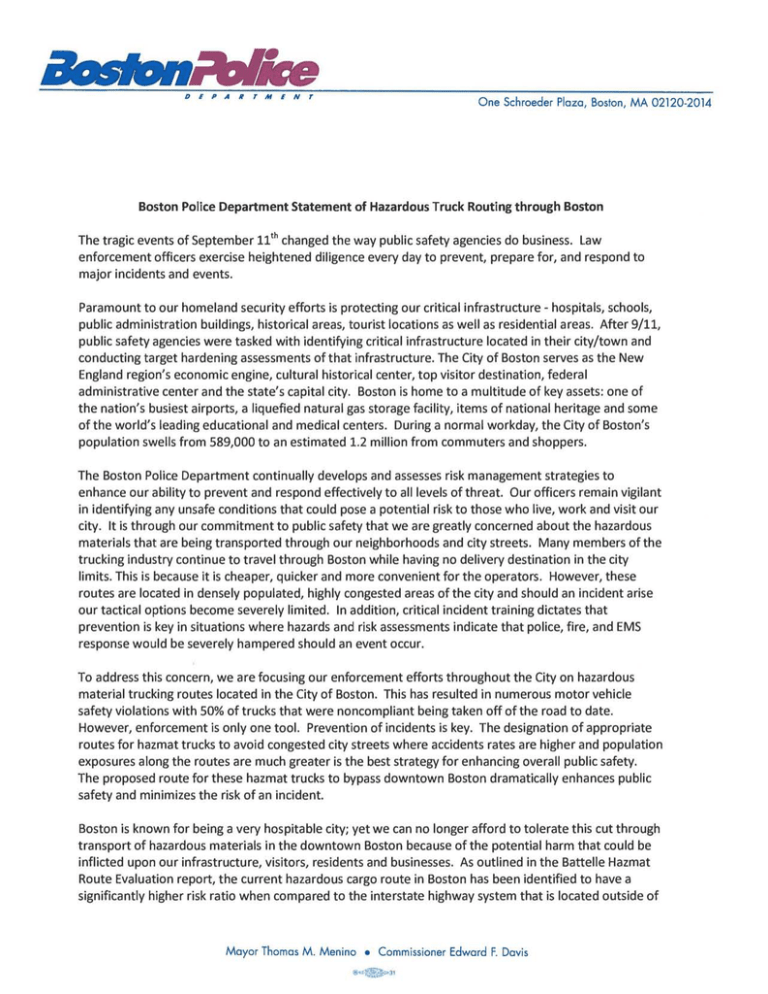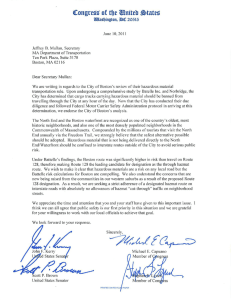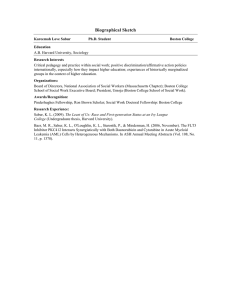Boston Police Department Statement of Hazardous Truck Routing through Boston
advertisement

D EPA R r MEN r One Schroeder Plaza, Boston, MA 02120-2014 Boston Police Department Statement of Hazardous Truck Routing through Boston The tragic events of September 11th changed the way public safety agencies do business. Law enforcement officers exercise heightened diligence every day to prevent, prepare for, and respond to major incidents and events. Paramount to our homeland security efforts is protecting our critical infrastructure - hospitals, schools, public administration buildings, historical areas, tourist locations as well as residential areas. After 9/11, public safety agencies were tasked with identifying critical infrastructure located in their city/town and conducting target hardening assessments of that infrastructure. The City of Boston serves as the New England region's economic engine, cultural historical center, top visitor destination, federal administrative center and the state's capital city. Boston is home to a multitude of key assets: one of the nation's busiest airports, a liquefied natural gas storage facility, items of national heritage and some of the world's leading educational and medical centers. During a normal workday, the City of Boston's population swells from 589,000 to an estimated 1.2 million from commuters and shoppers. The Boston Police Department continually develops and assesses risk management strategies to enhance our ability to prevent and respond effectively to all levels of threat. Our officers remain vigilant in identifying any unsafe conditions that could pose a potential risk to those who live, work and visit our city. It is through our commitment to public safety that we are greatly concerned about the hazardous materials that are being transported through our neighborhoods and city streets. Many members of the trucking industry continue to travel through Boston while having no delivery destination in the city limits. This is because it is cheaper, quicker and more convenient for the operators. However, these routes are located in densely populated, highly congested areas of the city and should an incident arise our tactical options become severely limited. In addition, critical incident training dictates that prevention is key in situations where hazards and risk assessments indicate that police, fire, and EMS response would be severely hampered should an event occur. To address this concern, we are focusing our enforcement efforts throughout the City on hazardous material trucking routes located in the City of Boston. This has resulted in numerous motor vehicle safety violations with 50% of trucks that were noncompliant being taken off of the road to date. However, enforcement is only one tool. Prevention of incidents is key. The designation of appropriate routes for hazmat trucks to avoid congested city streets where accidents rates are higher and population exposures along the routes are much greater is the best strategy for enhancing overall public safety. The proposed route for these hazmat trucks to bypass downtown Boston dramatically enhances public safety and minimizes the risk of an incident. Boston is known for being a very hospitable city; yet we can no longer afford to tolerate this cut through transport of hazardous materials in the downtown Boston because of the potential harm that could be inflicted upon our infrastructure, visitors, residents and businesses. As outlined in the Battelle Hazmat Route Evaluation report, the current hazardous cargo route in Boston has been identified to have a significantly higher risk ratio when compared to the interstate highway system that is located outside of Mayor Thomas M. Menino • Commissioner Edward F. Davis the City. The study found that the current route through Boston presents four times the risk to the general public than the proposed alternative route during the day and more than twice the risk during the nighttime. It is time for Massachusetts to adopt Mayor Menino's petition to designate a new non-radioactive hazardous material route requiring that vehicles with no delivery destination within the city limits travel around Boston and utilize the interstate highway system which was designed and built to handle such traffic.




